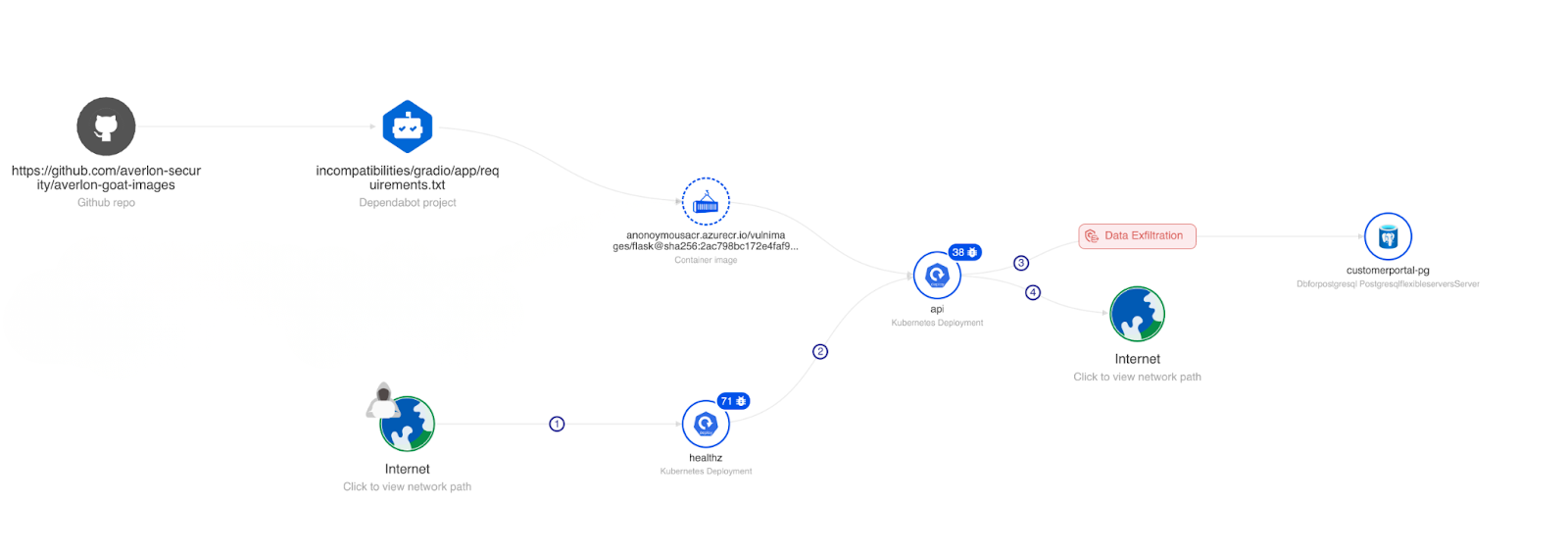Averlon + GitHub Dependabot: From Alert Overload to Agentic Action

The alert fatigue is real. Teams don’t need more detection. They need context that turns noise into action.
If you are a security professional, the constant stream of vulnerabilities, competing demands, and pressure to show measurable risk reduction has become the norm.
If you are a developer, this often translates into a growing backlog of fixes and mounting security debt, competing with the pressure to deliver new features.
And if you are a security leader, it means that exposure quietly accumulates, forcing you to trade off between reducing risk and maintaining business velocity.
The scale of open-source dependency risk demands smarter automation. That’s why we’re excited to share our new integration with GitHub Dependabot, the native dependency scanning tool trusted by millions of developers worldwide.
GitHub Dependabot scans project dependencies for known vulnerabilities and automatically creates pull requests to update them to safer versions. Averlon builds on that by using agentic AI to help teams determine which alerts really matter, why they matter, and recommends or performs safe remediations to help teams close exposure faster.
This integration helps teams move faster, stay aligned, and turn alert overload into meaningful, agentic action that reduces real risk.
Why GitHub Dependabot and Averlon: A Better Way to Prioritize, Trace, and Act
Security and engineering teams share the same goal: stronger software without slowing down development. Finding vulnerabilities is just the first step. Knowing which ones matter, and fixing them quickly, is what truly reduces risk.
Recent industry reports highlight the scale of today’s dependency and remediation challenge:
- 97% of audited codebases contain open-source components; of those, 86% include at least one vulnerable open-source component. (Black Duck OSSRA 2025)
- 80% of enterprise application dependencies are “unmanaged” (not kept up to date); even among updated dependencies, a 3.4% vulnerability rate remains. (Sonatype 2024)
- Even clearly identified, high-risk flaws take months to fix. KEV-listed vulnerabilities have a median remediation time of 174 days. (Bitsight 2024)
Together, these numbers show how detection has outpaced teams’ ability to prioritize and remediate. Many organizations remain stuck analyzing instead of acting.
The result is alert fatigue and stalled remediation. Teams detect issues faster than ever but lack the context and coordination to turn those findings into timely fixes. Vulnerabilities pile up, backlogs grow, and remediation timelines stretch while exposure remains.
Averlon’s integration with Dependabot helps close that gap. It combines Dependabot’s trusted dependency insights with Averlon’s agentic AI to bring risk context, prioritization, and automated remediation directly into the development workflow.
With the integration in place, security and engineering teams can:
- Surface the dependencies that present real exploit paths within their environment
- Connect each issue to its origin for faster assignment and accountability
- Accelerate remediation through agentic automation or pre-emptive mitigations such as WAF or entitlement updates

How This Integration Works
Dependabot and Averlon work together to turn dependency alerts into clear, risk-driven action.

- Dependabot scans your repositories and dependencies. It continuously monitors for vulnerable packages and raises pull requests when safer versions are available.
- Averlon brings environment context. Dependabot findings are enriched with data from cloud, identity, and runtime sources to understand how each issue manifests in your environment.
- Agentic AI drives prioritization. Averlon evaluates which vulnerabilities are actually exploitable, how multiple issues can be chained together to maximize impact, and the fastest, most effective path to remediation.
- Trace issues back to the origin. Each issue is mapped back to the relevant code and the right owner, with the context and insights needed for timely, targeted remediation
- Risk is reduced early. Where appropriate, Averlon applies automated mitigation, such as entitlement updates or WAF rules, to contain exposure while fixes are in progress.
The result is faster, safer remediation, built directly into the tools developers already use.
Ready to See It in Action
The Averlon + GitHub Dependabot integration is built for teams that need to:
- Keep up with fast-moving, dependency-heavy codebases
- Manage growing vulnerability backlogs with limited resources
- Strengthen collaboration between security and engineering without losing speed
See how Averlon brings context, prioritization, and agentic remediation to your development workflow:
🔍 See how Averlon turns Dependabot alerts into dependable fixes
🎥 Request a demo to watch agentic remediation in action
Featured Blog Posts
Explore our latest blog posts on cybersecurity vulnerabilities.
Ready to Reduce Cloud Security Noise and Act Faster?
Discover the power of Averlon’s AI-driven insights. Identify and prioritize real threats faster and drive a swift, targeted response to regain control of your cloud. Shrink the time to resolution for critical risk by up to 90%.





%20Vulnerability.png)
